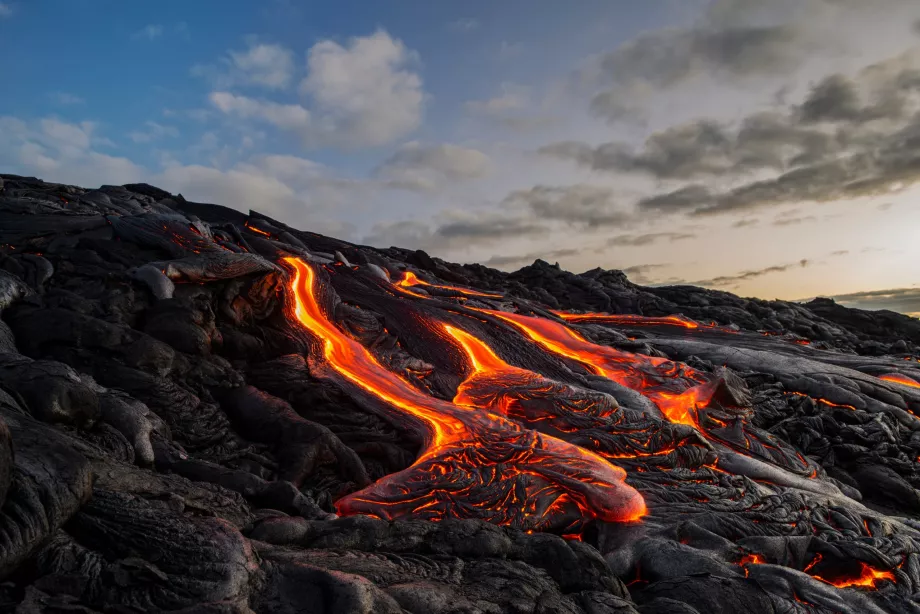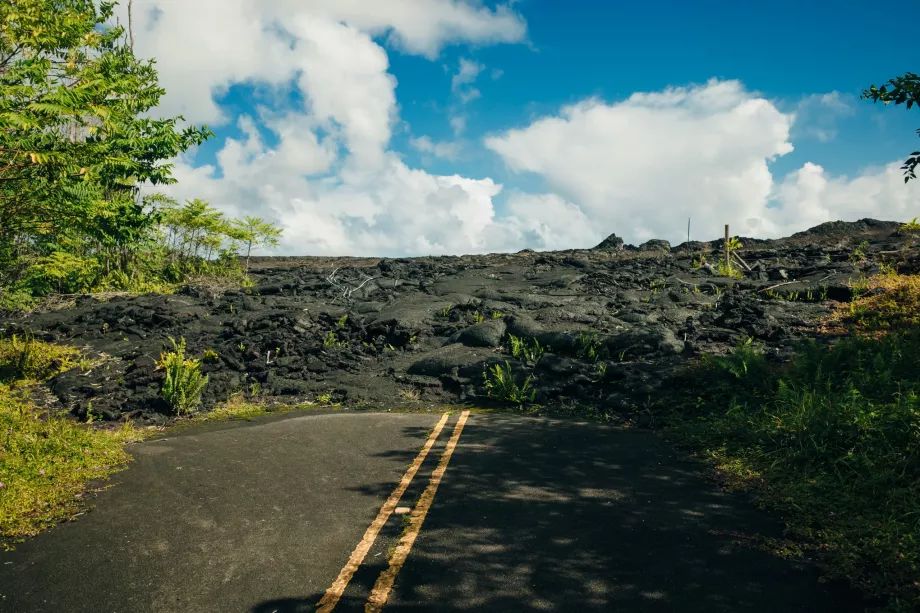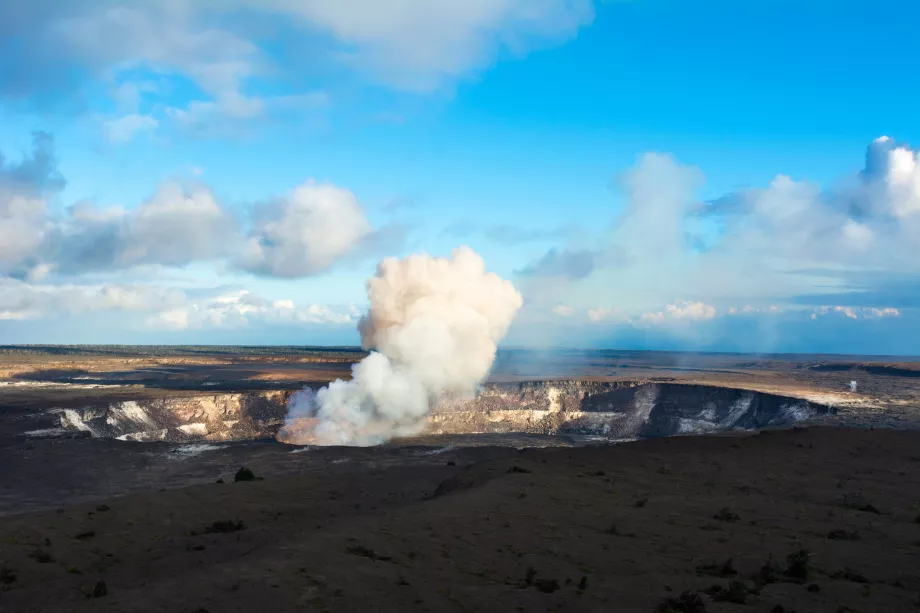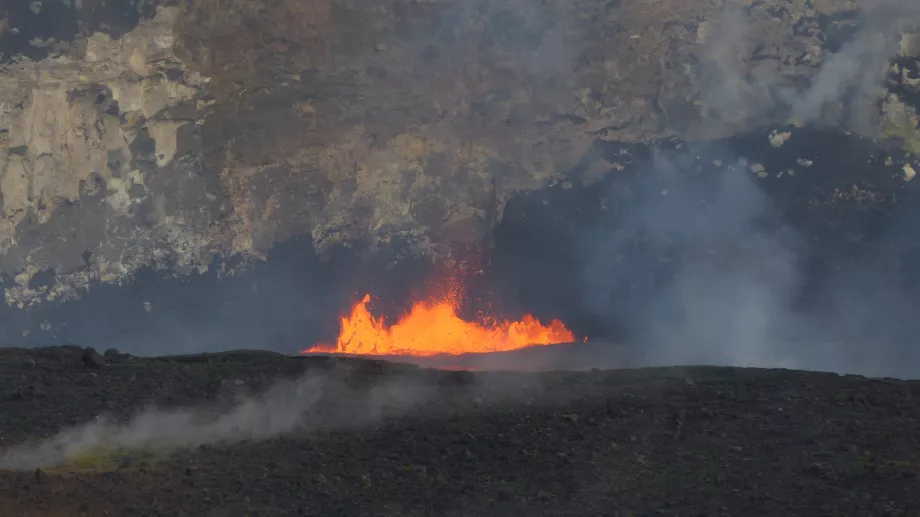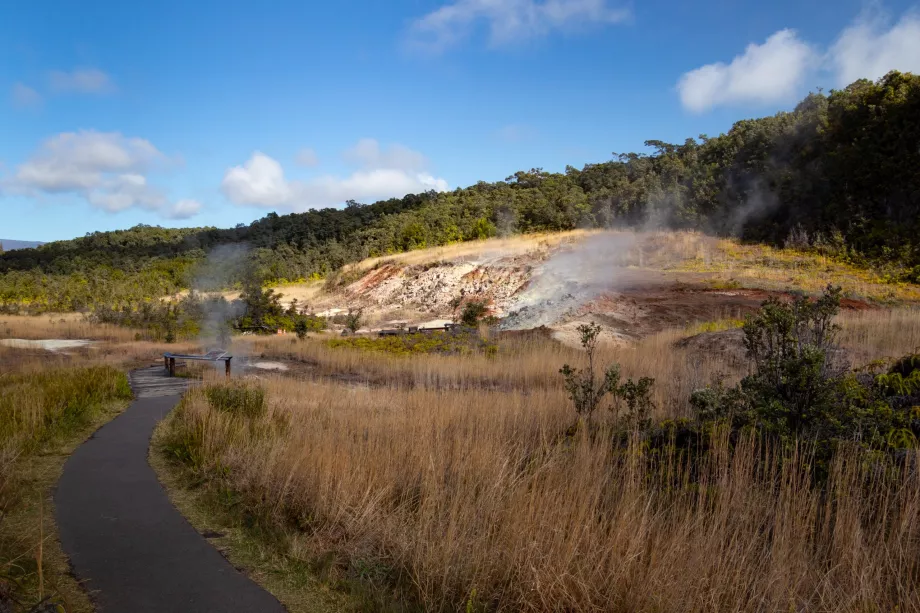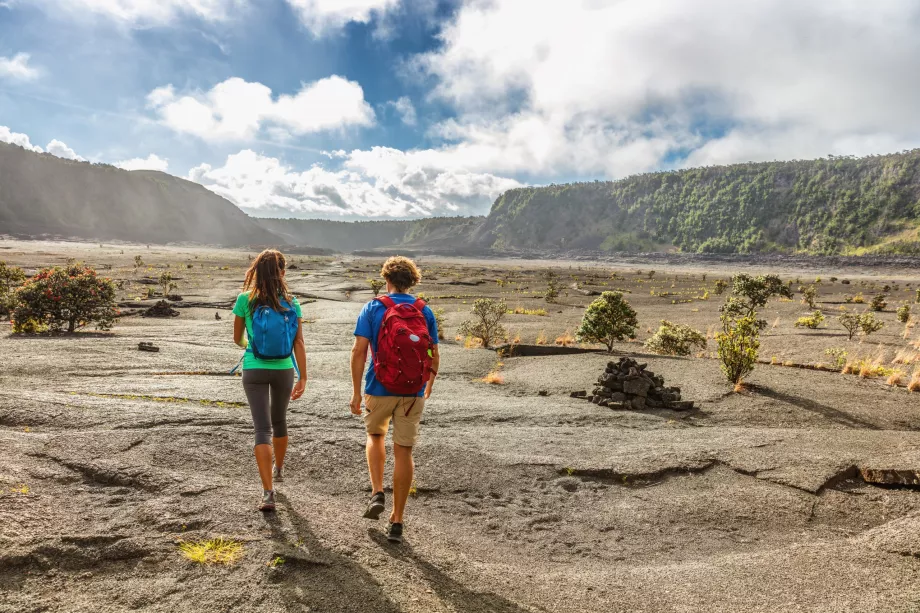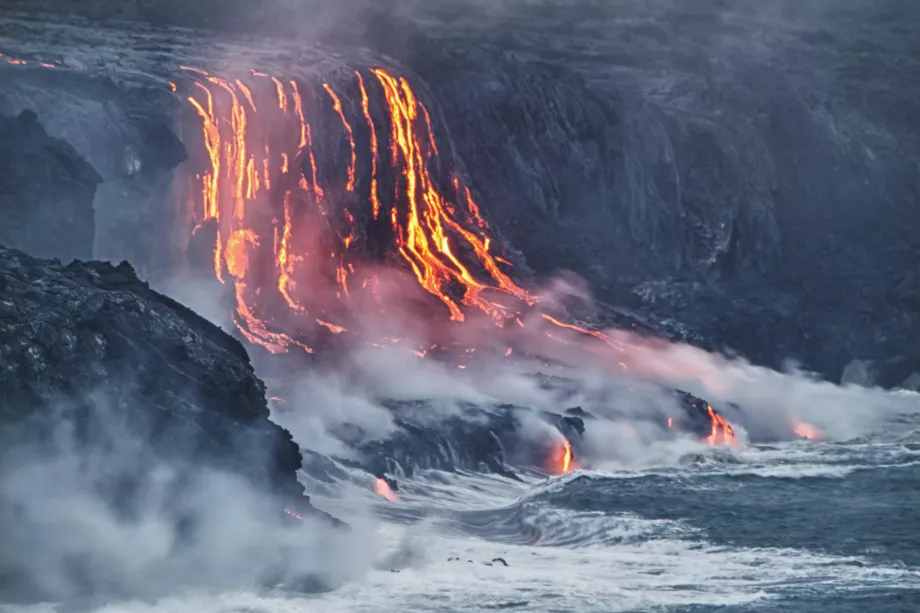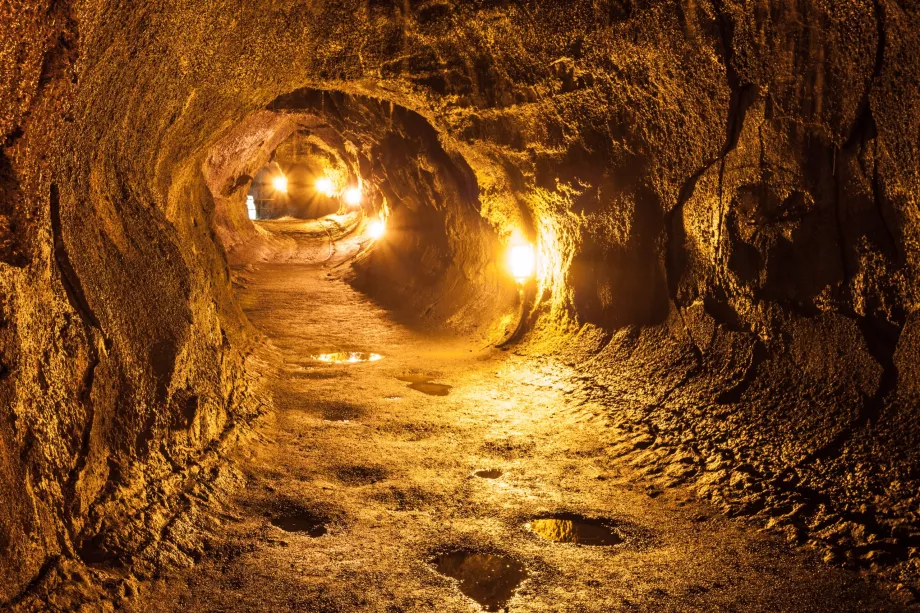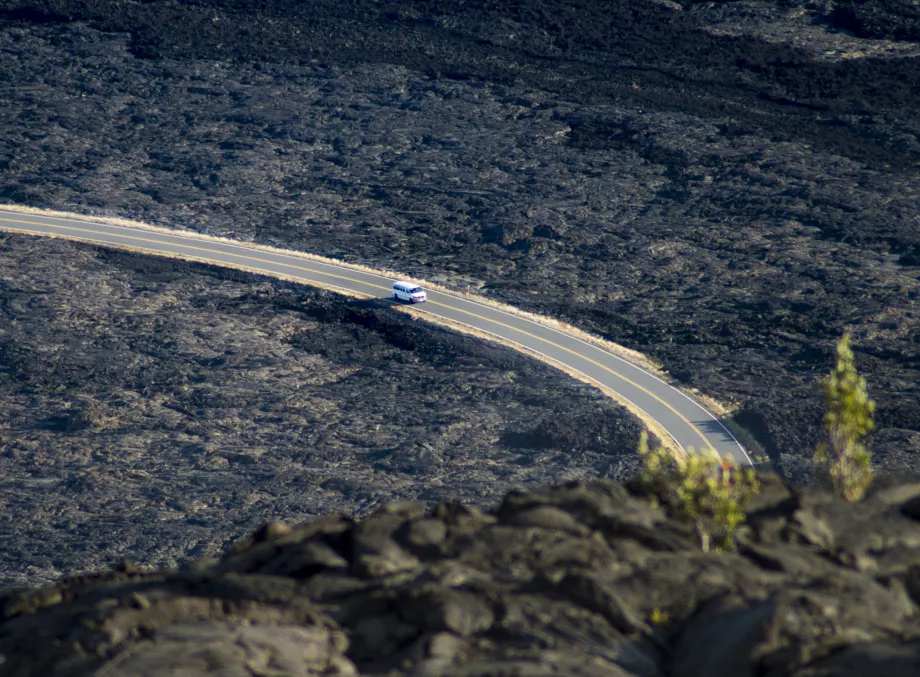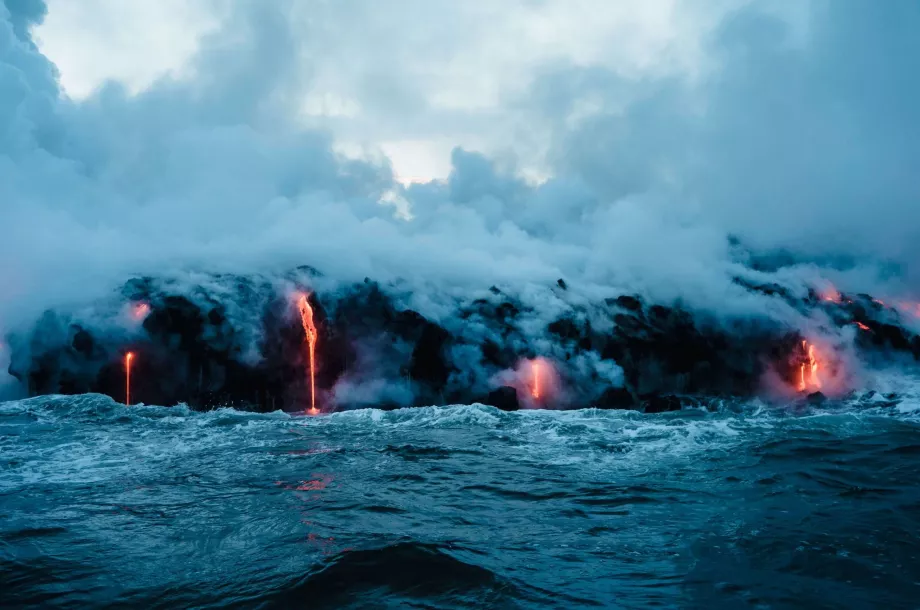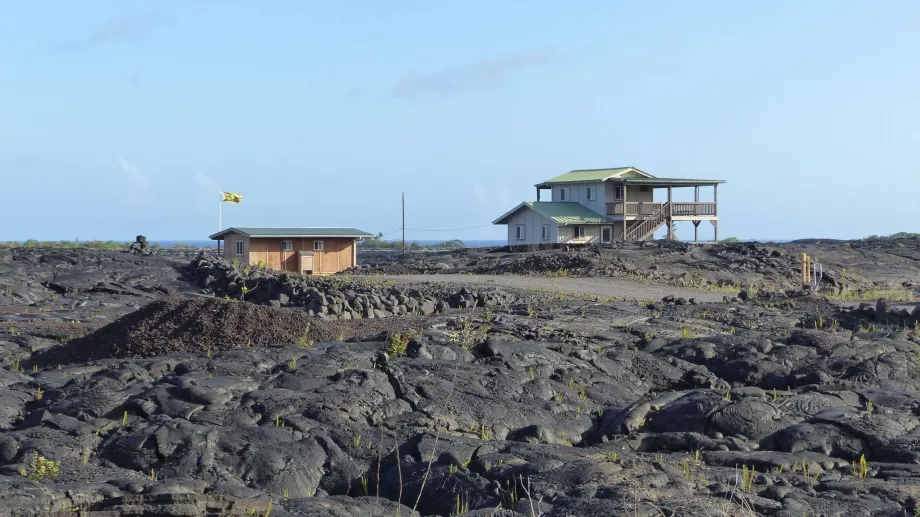Kilauea
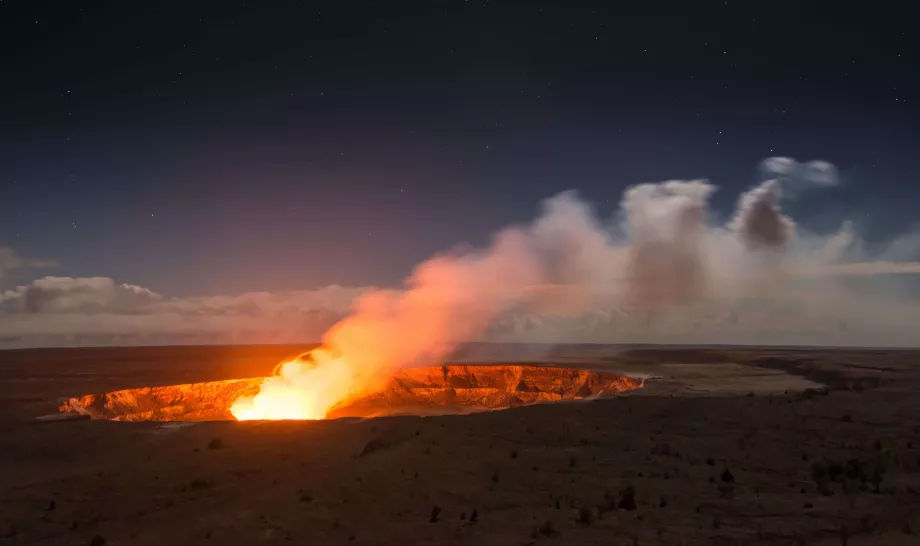
Mount Kilauea is the most active volcano in the world, constantly spewing lava from several craters, which flows down its slopes into the Pacific Ocean, where it solidifies and constantly increases the size of the island of Hawai'i in small pieces.
Because of its relatively good predictability, Kilauea Volcano and the surrounding Volcanoes National Park is a tourist destination and one of the best places in the world for live observation of volcanic processes.
The cheapest accommodation on the Big Island
Kilauea Volcano experiences a major eruption about every 30 years, so it is extremely active, so be aware of temporary access restrictions, which are always posted on the national park's website at nps.gov/havo.
The currently most active volcanic crater lies about 12 km from the main summit of Kilauea and is called by the mysterious name of Puʻu ʻŌʻō. It is the one responsible for the lava flows that flow out to sea and the massive eruptions that have completely changed the shape of the mountain several times over the past 40 years. Puʻu ʻŌʻō Crater is therefore inaccessible.
The ascent to Kilauea
The main crater of Kilauea lies at an altitude of 1,247 m above sea level, but this is not at all apparent at first glance. The summit is a flat plain and the fact that Kilauea spreads out over a very wide area means that you won't feel like you're that high even when you're walking from the sea.
Kilauea is very accessible. Just a few hundred meters from the active crater, the main road leads you to the large Kilauea Visitor Center.
From there, a leisurely walkway of about 500 metres leads along flat ground to a viewing platform above the huge crater.
See the bubbling lava for yourself
The wide observation deck offers an ethereal view of the vast black plain, in the middle of which is a small crater with constantly boiling lava that can be seen 365 days a year, 24 hours a day.
As the crater is quite deep and several hundred metres from the viewing platform, the best time to view the boiling lava cauldron is after dark. The area is accessible 24 hours a day, so there is no need to worry about opening hours.
Sulphur banks
You can extend your journey from the crater to the car park by following a path past the so-called Sulphur Banks, vents from deep within the volcano that are coated in yellowish sulphur on the surface, their distinctive smell permeating the whole area.
Especially here, heed all warning signs and do not step off the pavement under any circumstances. The ground around the sulphur benches is extremely fragile and it only takes one step to plunge into the depths with temperatures of several hundred degrees.
Kilauea Iki Crater
A popular trail leads through the long inactive Kilauea Iki Crater, which is located just a few hundred yards from the active one.
The trail takes you all the way to the crater floor, and you can admire the extreme biodiversity, from the bare black plains devastated by volcanic activity to the dense green forests along the crater's rim, through which the trail descends steeply.
Entrance fees and opening hours
Kilauea is part of Hawaii Volcanoes National Park, which requires an entrance fee. However, there are no additional fees to visit the overlook.
For information on current entrance fees, please visit our Volcanoes National Park page.
Admission is available 24 hours a day, 7 days a week.
What to see around
Discover all the places to see in Big Island.
Any questions left?
If you have any questions or comments about the article...

